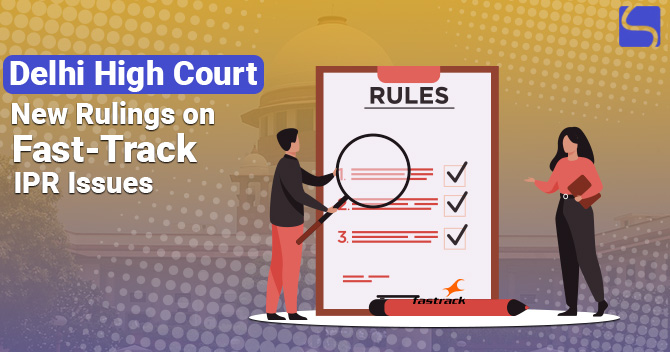A Complete Analysis of IP Commercialisation

Karan Singh | Updated: Feb 26, 2022 | Category: IPR
Intellectual Property is created by human intellect or it’s a creation of the mind. Intellectual Property Rights (IPRs) are the exclusive rights provided to the creator or owner. The common Intellectual Properties are Trademarks, Patents, Copyright, Industrial Designs, etc. Government all around the work have passed rules & regulations to make sure that innovations are safeguarded & commercialised. The goal is to make sure that people are motivated to invest in new ideas & inventions while also protecting them from others who just copy or reproduce them. In another way, IP is a significant tool for providing the market for ideas. The owner or creator of IP can also commercialise their Intellectual Properties in different ways. Scroll down to check more information regarding IP Commercialisation.
Table of Contents
What is the meaning of IP Commercialisation?
IP Commercialisation means turning new ideas into business by transforming an invention or idea into an object for selling and buying. The value of an Intellectual Property asset lies in the commercialisation of such assets and not certainly in creation. Mergers & Acquisitions (M&A) create because of the expertise, the IPR reserved by the big companies, which is the dominance of Intellectual Property (IP[1]) in the industry. A business entity gets the competitive edge only by putting use to their creation i.e., commercialising their IP assets.
IP Commercialisation helps to bring in investments, and it’s necessary for a company to realise the significance of such assets and commercialise assets in time and gain some profits from their own creations since this is one of the most powerful assets for a company which increases the shining future of a business. Accordingly, IP commercialisation is a vital activity as it permits the business entity or the creator to seek their share from the society or people in exchange for access to their creations to the individual to the people at an extensive level.
Different tools for IP Commercialisation
There are two vital tools by which the creators or owners may use for IP commercialisation:
- Assignment: The transfer of IP ownership may be affected by a formal assignment or it may be termed as direct sale of Intellectual Property Rights (IPRs) by which the overall or part of IP rights can be assigned. It’s a formal document by which rights are transferred from one individual to another. Intellectual Property Rights cannot be efficiently transferred except via a written contract assignment.
The importance of assignment in Indian IP Law is most vital despite being a private transaction between the assignor & the assignee. The IPR Regime in India gives specific legal guidelines when dealing with assignment agreements. The different statutes make provisions for registering agreements, and their particular schedules also stipulate for forms via which such agreements can be registered with concerned authority to make it lawful & binding and to avoid any further discrepancy, they protect the owner’s interest.
Following are some guidelines for IP Assignment Agreements:
- Issue of ownership should be carefully dealt with mostly for the companies;
- Whether the assignment agreement is being effected with Goodwill/without goodwill;
- Profit component;
- The capable market value of Intellectual Property;
- All expenses & costs, comprising direct & indirect costs of R&D, any outsourcing and the protecting cost of the Intellectual Property;
- Governing Law & Disputes;
- Complaint with the pertinent statute as prevails in India.
- License: A common & effective means of IP Commercialisation is the licensing of IPR through one or more licensing agreements. The term licensing means the owner has granted permission to another individual for the use of Intellectual Property under the agreed terms & conditions. This licensing strategy is a vital tool of IP Commercialisation if the owner doesn’t have the experience or strategy to develop and market the product or service.
The License Agreement is a formal tool that serves different purposes. The scope of the grant of the license relies on the nature of the IP being licensed.
Following are some guiding factors for IP Licensing Agreements:
- Terms for sub-licensing;
- Licensing Period;
- Parties Obligations;
- Limitations attached to the Intellectual Property being licensed;
- Lump-Sum payments or Royalty;
- Usage of IP rights by Licensee: Exclusive or Non-exclusive;
- Territorial scope (outside or country);
- Indemnity Clause;
- Termination Clause;
- Restrictions or Reservation of any special right.
- Ownership Rights in Intellectual Property Rights.
There are other tools of IP Commercialisation:
- Mergers and Acquisitions;
- Franchising;
- Joint Venture.
What are the Initial Steps for IP Commercialisation?
Step 1: Analysis of Market: A market analysis where the product or service is to be commercialised marks the beginning of the IP Commercialisation process. The term marks refer to the product market as well as a geographical market. The geographical market includes the country or countries in which the Intellectual Property is to be commercialised, whereas the product or goods market covers factors like the product or service demand, etc.
Step 2: IP Audit: This is the next step after market analysis. An IP Audit is a tool for recognising your potential IP assets. It’s an inspection of all the IPRs either used or owned by the company. This process aids in risk management by assessing the risk & coming up with solutions. Intellectual Properties are intangible in nature but play a vital role in a company. There is more to a business or a company than just physical assets. It’s vital to assess all the intangible assets developed or created by the company since its beginning. However, this process must cover the following things:
- Company or business name;
- Style or name or any other indication that is used by the company to sell its goods or services;
- Any distinctive product that the company has developed or invented (protected by Patent Registration);
- A new processor innovative practices which comes under the purview of trade secrets;
- Packaging style or products shape which distinguishes it from the other products (can be protected by Design Registration or even without registration, it’s safeguarded under Copyright Registration);
- List of clients and their personal information & preferences must also be comprised in Intellectual Property Audit;
- Advantageous compliance procedures, internal practices, internal policies, quality assurance policies should be recognised as Trade Secrets.
This process will help the company or business to list all the company’s assets and make sure that they are safeguarded and cannot be violated. After examining, the company can file for registration or renew their IPs that have expired.
Step 3: Valuation of IP: After listing down all the registered or non-registered Intellectual Properties, the next step is to calculate their value in economic terms. The financial value of the Intellectual Properties is directly proportional to the economic benefits they will give in the future. It may rely on the following points:
- Ability to eliminate or exclude the competitors from entering into the market;
- Usefulness to the IP owner either directly or via sale.
Valuation is a complicated process that requires the use of qualified professionals to evaluate or estimate the assets. The extent to which a business or a company exploits and value its IP assets is one of the variables influencing its failure or success. Any Intellectual Property strategy should always balance any prospective short gain against probable long-term suffering in terms of strategic objectives of the business.
Conclusion
The above outline on IP Commercialisation relates to specific study on each type of IPRs in light of respective statue and to know the intrinsic features of various agreements like licensing, transferring, franchising, or assigning of IP protecting and protecting the business interests of owners.
Read our Article:All You Need To Know About IPR in Mobile Applications














